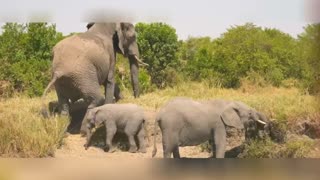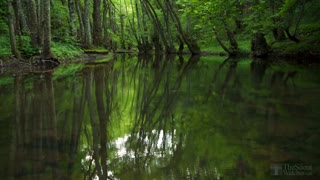Animals & Wildlife • Relaxing and Nature Sounds
The world's biodiversity and animal species have decreased alarmingly in half a century: more than 25,000 animal species, almost a third of the known ones, are in danger of disappearing. Climate change will be responsible for 8% of them.
European scientists have studied, for their part, the reduction of the mass of flying insects in natural parks, and the data speak for themselves: 75% since 1990. Climate change and pesticides appear as the main causes of this significant decrease. The decrease in bees is of great concern. The United States Department of Agriculture has counted 2,500,000 hives in 2015 (date of the last report) compared to more than 5,000,000 in 1998. Who will pollinate the plants that feed us? According to the Food and Agriculture Organization of the United Nations (FAO), 100 species of crops provide 90% of food for humanity and 71% of them are pollinated by bees.
Even the tiniest and most undesirable animal on the planet plays a vital role in its ecosystem, so that a change in its eating habits, that is, in its food chains, can compromise the survival of everything around it. We are talking about ecological balance, that is, the interdependence between all living things in a biome. Of course, man is the animal that most challenges the ecological balance, through the excessive exploitation of natural resources, the pollution of land, water, and air in its path, and the domestication and redistribution of species at will. An example of this is the recent change in the polar bear's diet due to global warming, which has shortened the hunting period for baby seals. The progressive disappearance of biodiversity is more important than we can imagine since it ultimately leads to the disappearance of our own species. These are, according to experts, some of the animals essential for the survival of life on Earth.
Get More Wild Life in Jungle:
Facebook: https://www.facebook.com/WildlifeinJungle
-
 4:24
4:24
Ardhi17
1 year agoRELAXING WITH AMAZING NATURAL SOUNDS AND ANIMALS
4 -
 0:25
0:25
Gold Star
1 year agoAnimal Life nature music for relaxing and enjoyable
6 -
 33:00
33:00
musikentspannende
1 year agoThe Sound Of Forest Birds - Relax Music
40 -
 1:01:31
1:01:31
BeastyDragon
1 year agoFOREST Nature Relaxing SOUNDS
1 -
 1:01:50
1:01:50
Remus777
1 year agoLake and water waves sound with birds and animals to relax or play on background
5 -
 25:04
25:04
Nature
1 year agoCow Grazing and Relaxing with Soothing Nature Sounds
16 -
 2:00:04
2:00:04
dreamsounds like subscribe
1 year agoForest Birdsong - Relaxing Nature Sounds - Birds Chirping
94 -
 3:00:11
3:00:11
Aloha Relax
1 year agoNature & Birds Chirping Sounds That Will Make You Relax
20 -
 1:00:00
1:00:00
Harmonic Soundscape
1 year agoHarmonic Soundscape Wildlife
14 -
 1:00:00
1:00:00
serenesounds
1 year agoWaterfall Sound Relaxing Rainforest Nature,Sleep Sound Birds Ambience
122